Welcome to the Amira-Avizo Software Use Case Gallery
Below you will find a collection of use cases of our 3D data visualization and analysis software. These use cases include scientific publications, articles, papers, posters, presentations or even videos that show how Amira-Avizo Software is used to address various scientific and industrial research topics.
Use the Domain selector to filter by main application area, and use the Search box to enter keywords related to specific topics you are interested in.
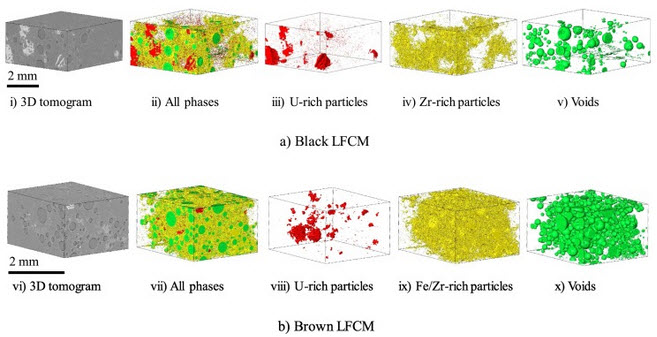
Decommissioning of the damaged Chernobyl nuclear reactor Unit 4 is a top priority for the global community. Before such operations begin, it is crucial to understand the behaviour of the hazardous materials formed during the accident. Since those materials formed under extreme and mostly unquantified conditions, modelling alone is insufficient to accurately predict their physical, chemical and, predominantly, mechanical behaviour. Meanwhile, knowledge of the mechanical characteristics of thos... Read more
C.Paraskevoulakos, J.P.Forna-Kreutzer, K.R.Hallam, C.P.Jones, T.B.Scott, C.Gausse, D.J.Bailey, C.A.Simpson, D.Liu, C.Reinhard, C.L.Corkhill, M.Mostafavi
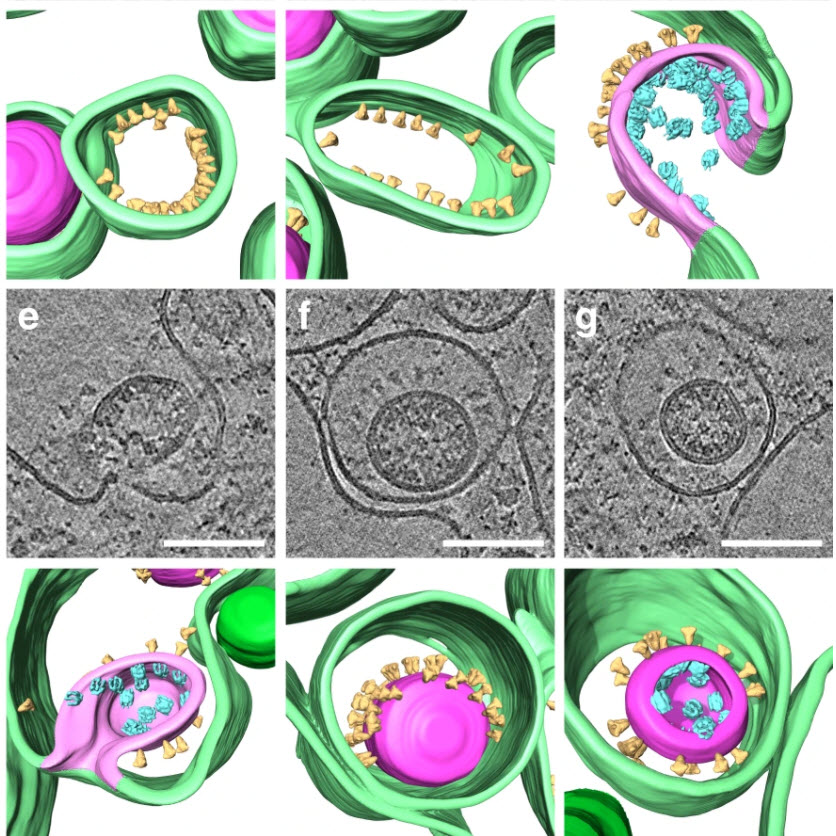
SARS-CoV-2 structure and replication characterized by in situ cryo-electron tomography
Severe acute respiratory syndrome coronavirus 2 (SARS-CoV-2), the causative agent of the COVID19 pandemic, is a highly pathogenic β-coronavirus. As other coronaviruses, SARS-CoV-2 is enveloped, replicates in the cytoplasm and assembles at intracellular membranes. Here, we structurally characterize the viral replication compartment and report critical insights into the budding mechanism of the virus, and the structure of extracellular virions close to their native state by in situ cryo-electr... Read more
Steffen Klein, Mirko Cortese, Sophie L. Winter, Moritz Wachsmuth-Melm, Christopher J. Neufeldt, Berati Cerikan, Megan L. Stanifer, Steeve Boulant, Ralf Bartenschlager, Petr Chlanda
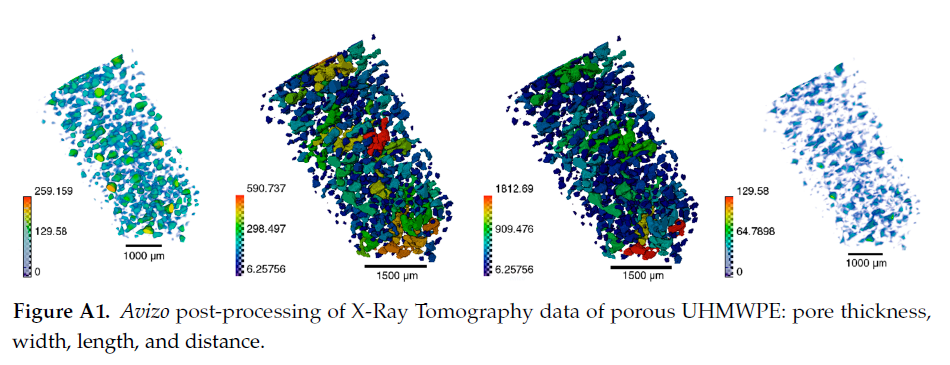
Since its invention and commercialization in the 1950s, ultra-high molecular weight polyethylene (UHMWPE) has been known as a high-performance polymer successfully applied in diverse engineering systems ranging from strong ropes for naval demands and wear-resistant liners in bearings, transportation belts and heavy trucks in mines and quarries, through the lining of chemical vessels and disposable bags in bioreactors, to sophisticated products such as orthopaedic implants and replacements of ... Read more
Eugene S. Statnik, Codrutza Dragu, Cyril Besnard, Alexander J.G. Lunt, Alexey I. Salimon, Aleksey Maksimkin and Alexander M. Korsunsky
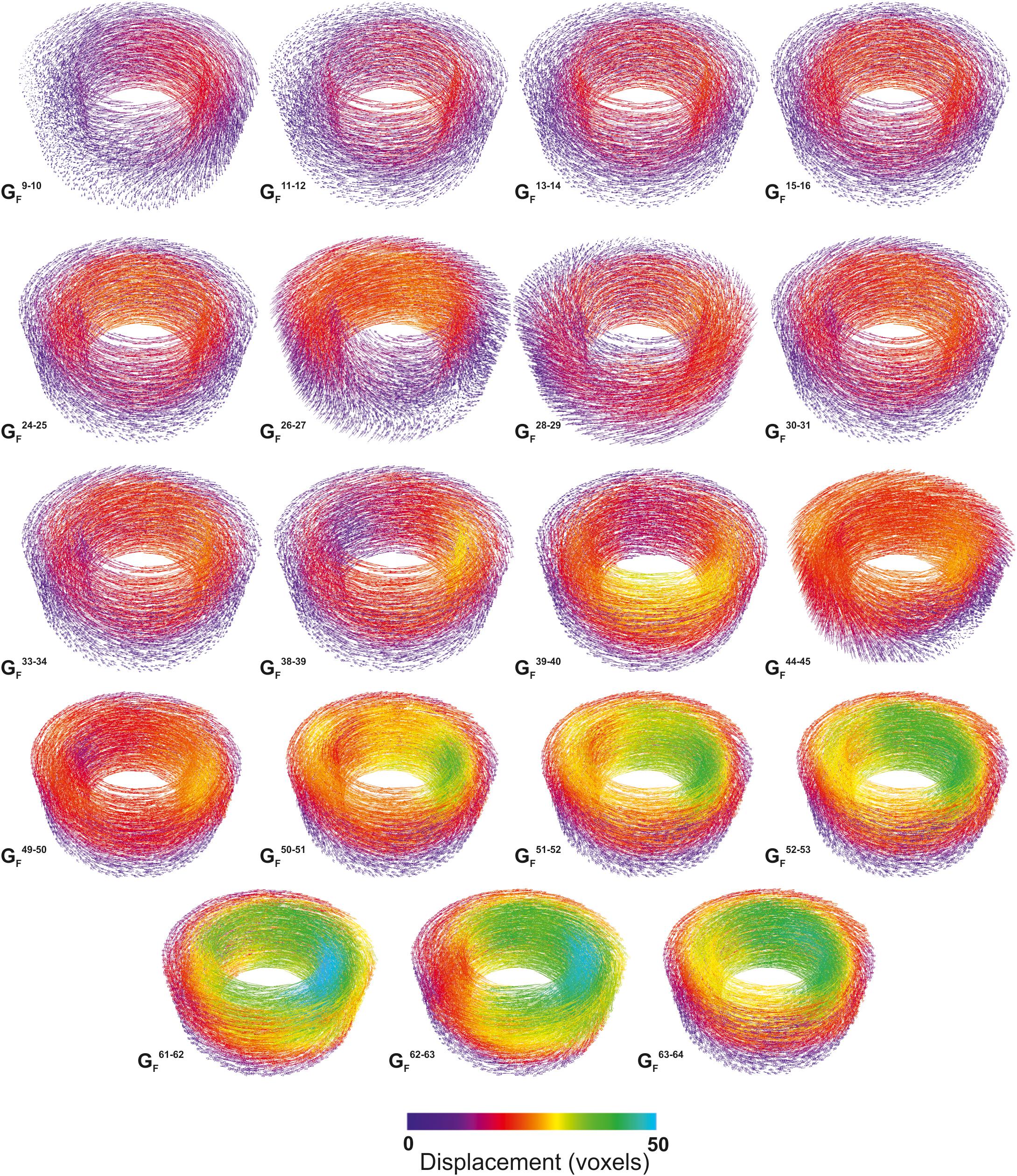
Quantifying Microstructural Evolution in Moving Magma
Many of the grand challenges in volcanic and magmatic research are focused on understanding the dynamics of highly heterogeneous systems and the critical conditions that enable magmas to move or eruptions to initiate. However, we are usually unable to observe the processes directly. Here we give a short synopsis of the new capabilities and highlight the potential insights that in situ observation can provide. We present the first 3D data showing the evolving textural heterogeneity within a sh... Read more
Katherine J. Dobson1, Anja Allabar, Eloise Bretagne, Jason Coumans, Mike Cassidy, Corrado Cimarelli, Rebecca Coats, Thomas Connolley, Loic Courtois, Donald B. Dingwell, Danilo Di Genova, Benjamin Fernando, Julie L. Fife, Frey Fyfe, Stephan Gehne, Thomas Jones, Jackie E. Kendrick, Helen Kinvig, Stephan Kolzenburg, Yan Lavallée, Emma Liu, Edward W. Llewellin, Amber Madden-Nadeau, Kamel Madi, Federica Marone, Cerith Morgan, Julie Oppenheimer, Anna Ploszajski, Gavin Reid, Jenny Schauroth, Christian M. Schlepütz, Catriona Sellick, Jérémie Vasseur, Felix W. von Aulock, Fabian B. Wadsworth, Sebastian Wiesmaier and Kaz Wanelik
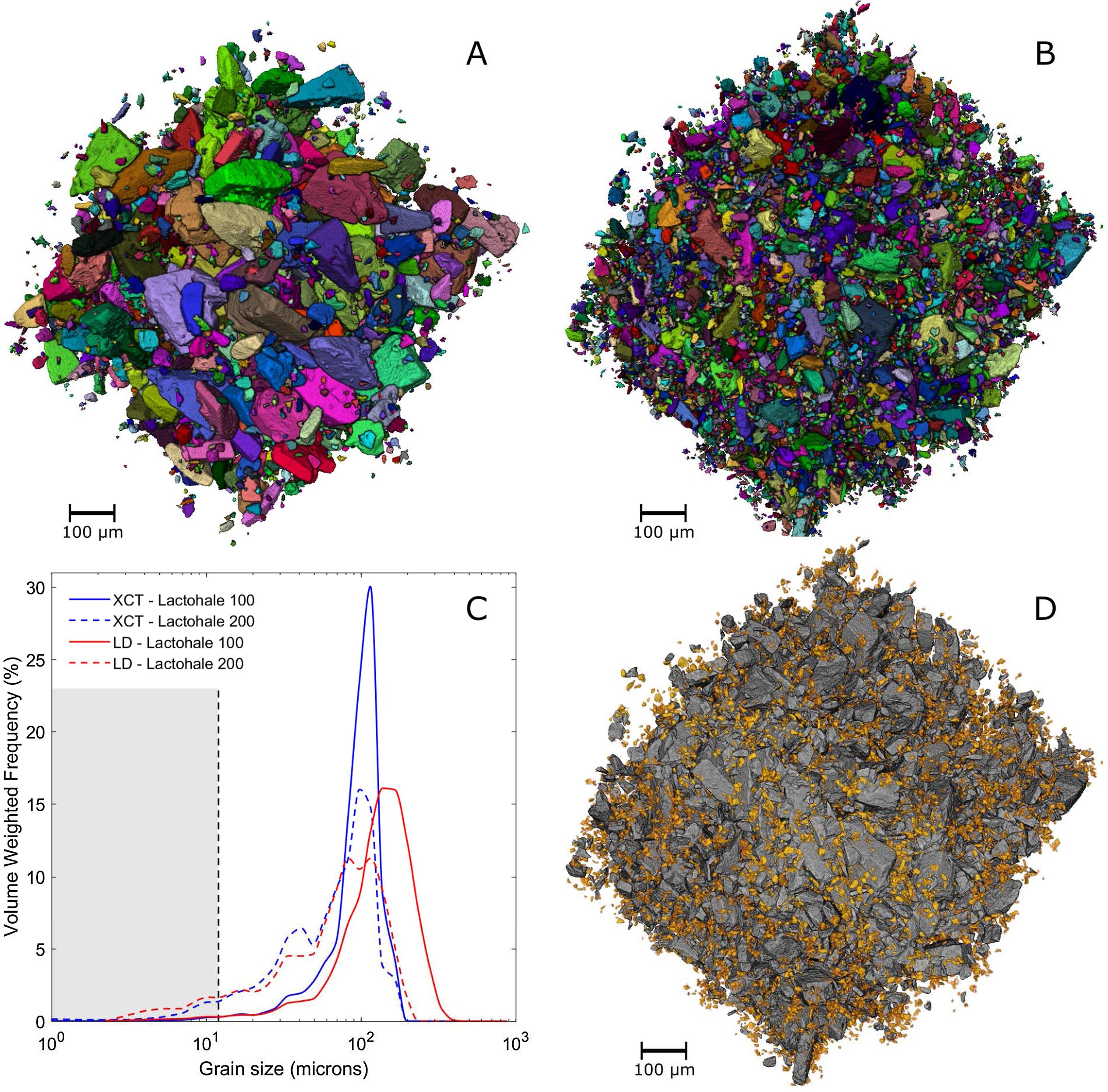
3D characterisation of dry powder inhaler formulations
Carrier-based dry powder inhaler (DPI) formulations need to be accurately characterised for their particle size distributions, surface roughnesses, fines contents and flow properties. Understanding the micro-structure of the powder formulation is crucial, yet current characterisation methods give incomplete information. Commonly used techniques like laser diffraction (LD) and optical microscopy (OM) are limited due to the assumption of sphericity and can give variable results depending on par... Read more
P. Gajjar, I.D. Styliari, T.T.H. Nguyen, J. Carr, X. Chen, J.A. Elliott, R.B. Hammond, T.L. Burnett, K. Roberts, P.J. Withers, D.Murnane
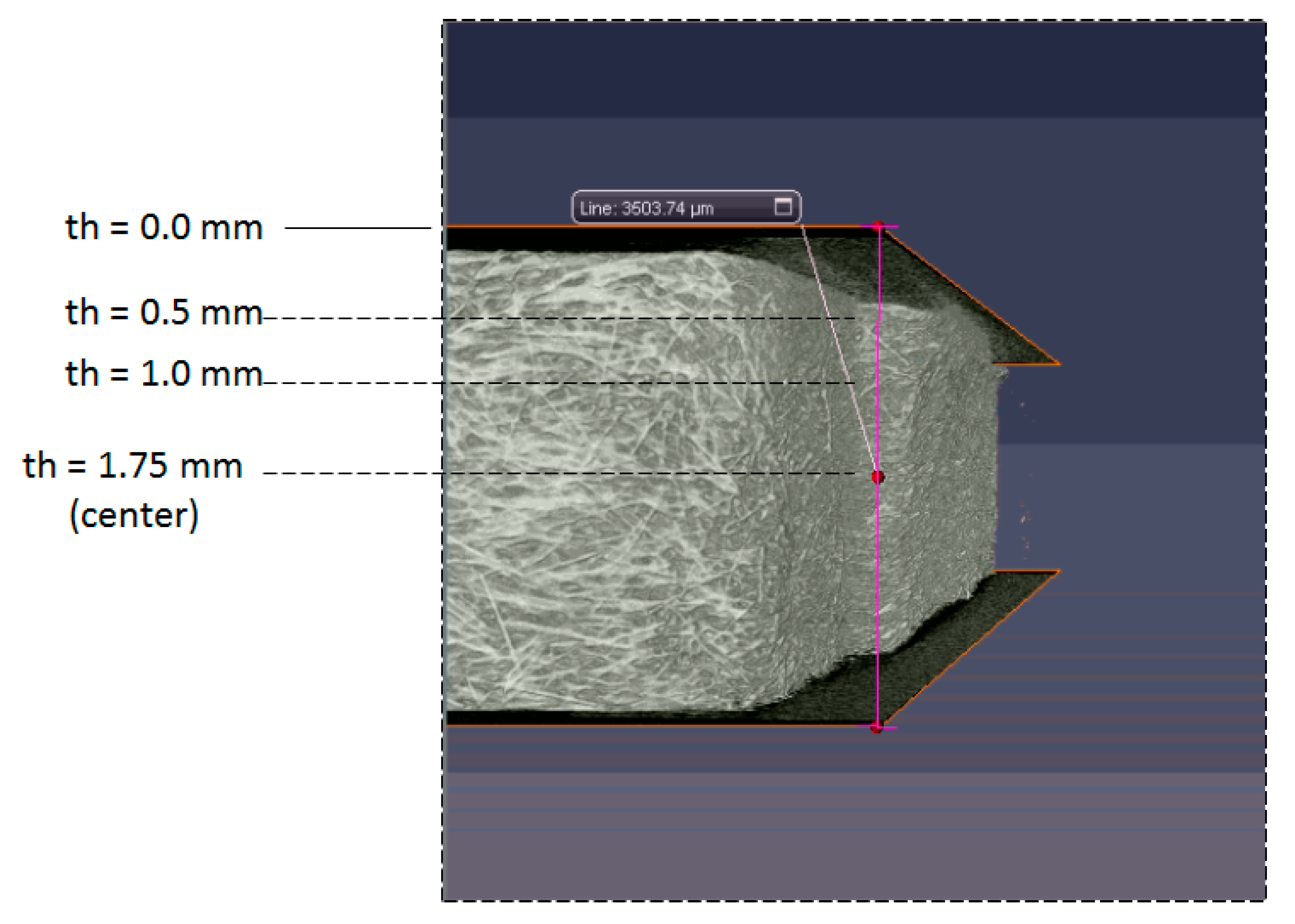
In recent years, due to the rapid development of industrial lightweight technology, composite materials based on fiber reinforced plastics (FRP) have been widely used in the industry. However, the environmental impact of the FRPs is higher each year. To overcome this impact, co-injection molding could be one of the good solutions. But how to make the suitable control on the skin/core ratio and how to manage the glass fiber orientation features are still significant challenges. In this study, ... Read more
Chao-Tsai Huang, Xuan-Wei Chen, Wei-Wen Fu
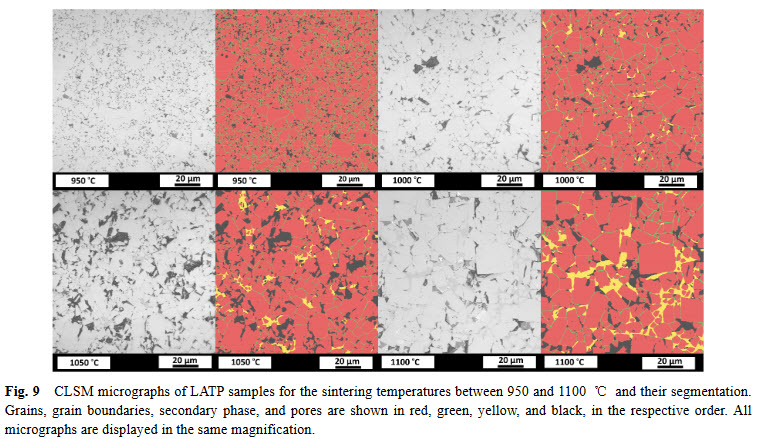
Lithium aluminum titanium phosphate (LATP) is one of the materials under consideration as an electrolyte in future all-solid-state lithium-ion batteries. In ceramic processing, the presence of secondary phases and porosity play an important role. In a presence of more than one secondary phase and pores, image analysis must tackle the difficulties about distinguishing between these microstructural features. In this study, we study the phase evolution of LATP ceramics sintered at temperatures b... Read more
Deniz Cihan GUNDUZ, Roland SCHIERHOLZ, Shicheng YUa, Hermann TEMPEL, Hans KUNGL, Rüdiger-A. EICHEL
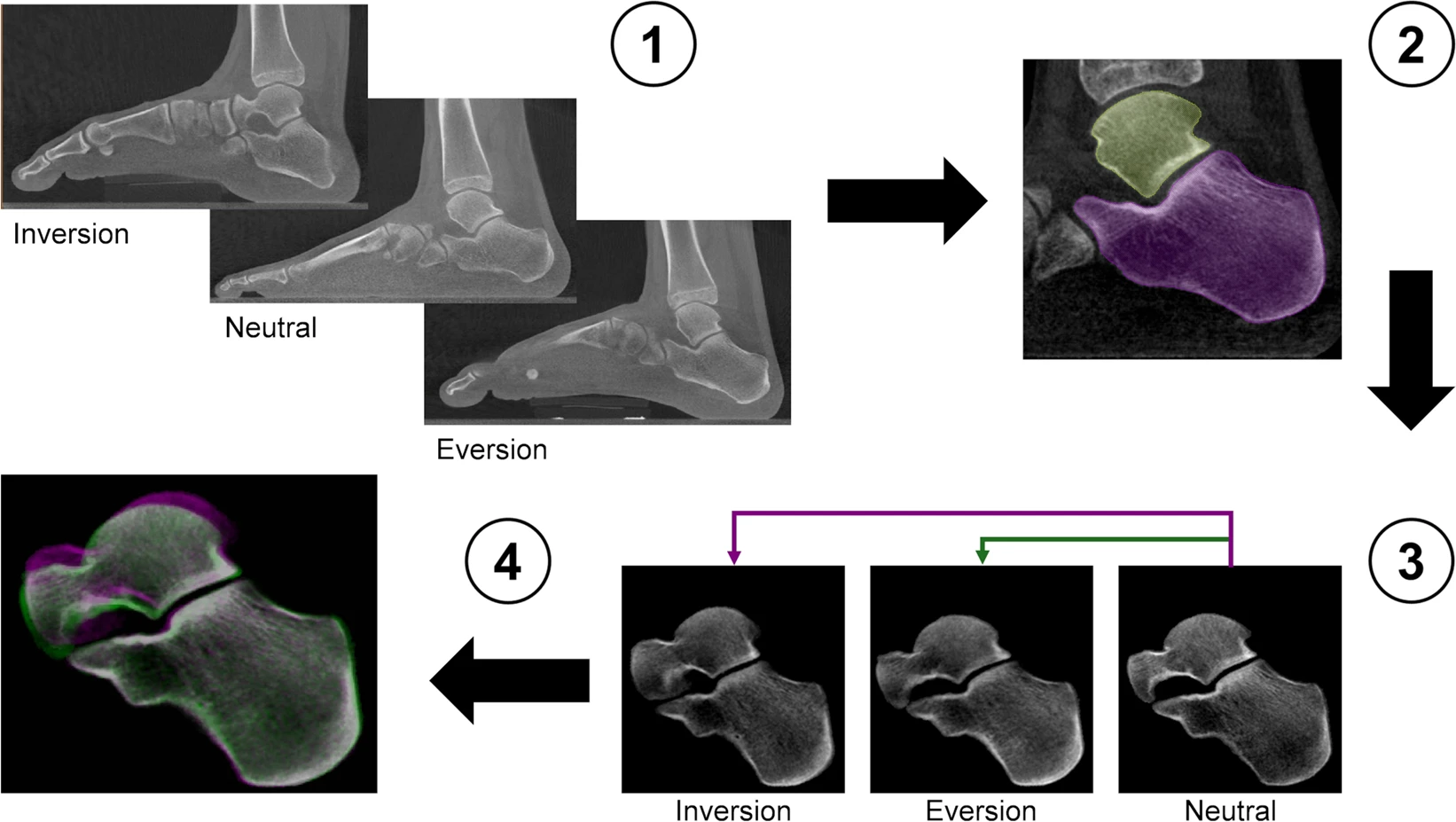
Centre of Rotation of the Human Subtalar Joint Using Weight-Bearing Clinical Computed Tomography
The subtalar joint describes an articulation between talus and calcaneus, forming one of two joints of the hindfoot with the tibiotalar or ankle joint above the talus and the subtalar joint below. The talus comprises of three facets (anterior, middle and posterior) that articulate with the mating facets on the calcaneus at the subtalar joint. The bones are connected by a complex of ligamentous structures that connect the talus to the calcaneus and both structures to the adjacent navicular bon... Read more
Marta Peña Fernández, Dorela Hoxha, Oliver Chan, Simon Mordecai, Gordon W. Blunn, Gianluca Tozzi & Andy Goldberg
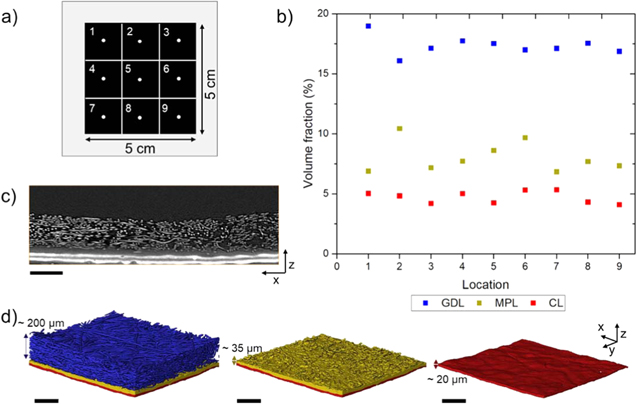
With the growing use of X-ray computed tomography (X-ray CT) datasets for modelling of transport properties, comes the need to define the representative elementary volume (REV) if considering three dimensions or the representative elementary area (REA) if considering two dimensions. The resolution used for imaging must be suited to the features of interest in the sample and the region-of-interest must be sufficiently large to capture key information. Polymer electrolyte fuel cells have a hier... Read more
Jennifer Hack et al 2020 J. Electrochem.
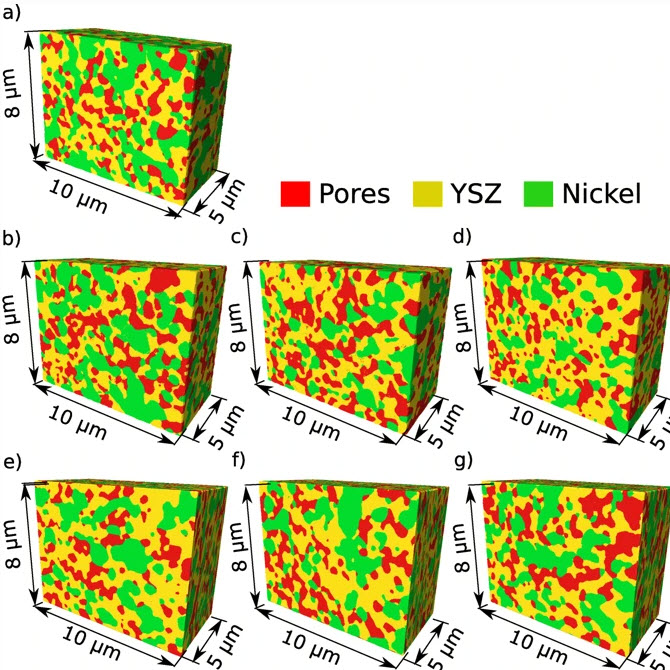
An Anisotropic Microstructure Evolution in a Solid Oxide Fuel Cell Anode
A solid oxide fuel cell (SOFC) is an electrochemical device that converts the chemical energy of hydrogen directly into electricity. A single cell usually has a form of a flat plate in which an impervious and dense ion-conducting electrolyte is sandwiched between two porous catalytic electrodes: an anode and a cathode. Fuel is fed to the anode side, and the air is supplied to the cathode. The gasses cannot mix to avoid unproductive combustion. Instead, gasses hit catalyst material, lose their... Read more
Grzegorz Brus, Hiroshi Iwai, Janusz S. Szmyd
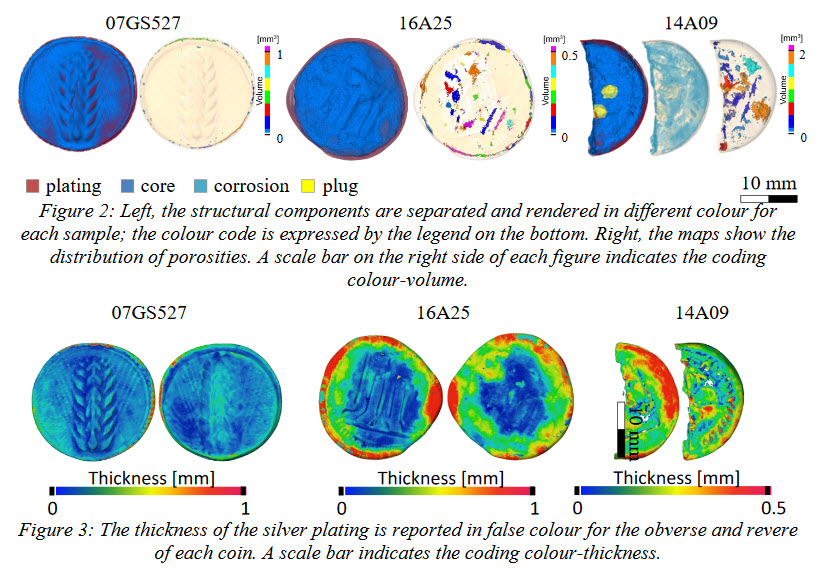
A Neutron Tomographic Analysis of Plated Silver Coins from Ancient Greece Official or Illegal?
In the 6th century BC different techniques of coin manufacture were employed by mints in mainland Greece and in the Greek colonies in Southern Italy. In Greece these techniques were evidently derived from the Lydians and consisted in striking a piece of cast metal of predetermined weight (a ‘blank’ or flan) between two engraved dies made of hardened bronze. Colonies in Magna Graecia, however, uniquely developed another set of minting techniques to produce what today is called incuse coina... Read more
Scott Olsen, Filomena Silvemini, Ulf Garbe, Max Avdeev, Joel Davis, Vladimir Luzin, Ken Sheedy
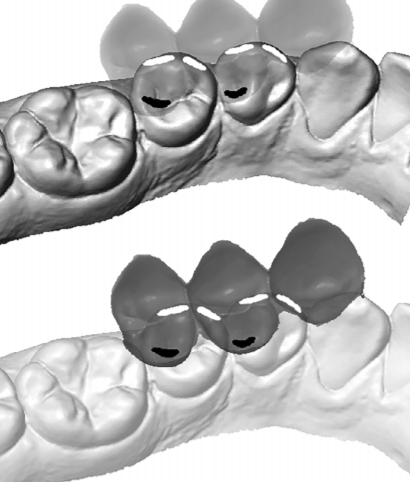
Variation of 3D outer and inner crown morphology in modern human mandibular premolars
This study explores the outer and inner crown of lower third and fourth premolars (P3, P4) by analyzing the morphological variation among diverse modern human groups.
We studied three‐dimensional models of the outer enamel surface and the enamel–dentine junction (EDJ) from μCT datasets of 77 recent humans using both an assessment of seven nonmetric traits and a standard geometric morphometric (GM) analysis. For the latter, the dental crown was represented by ... Read more
Viktoria A. Krenn, Cinzia Fornai, Lisa Wurm, Fred L. Bookstein, Martin Haeusler, Gerhard W. Weber
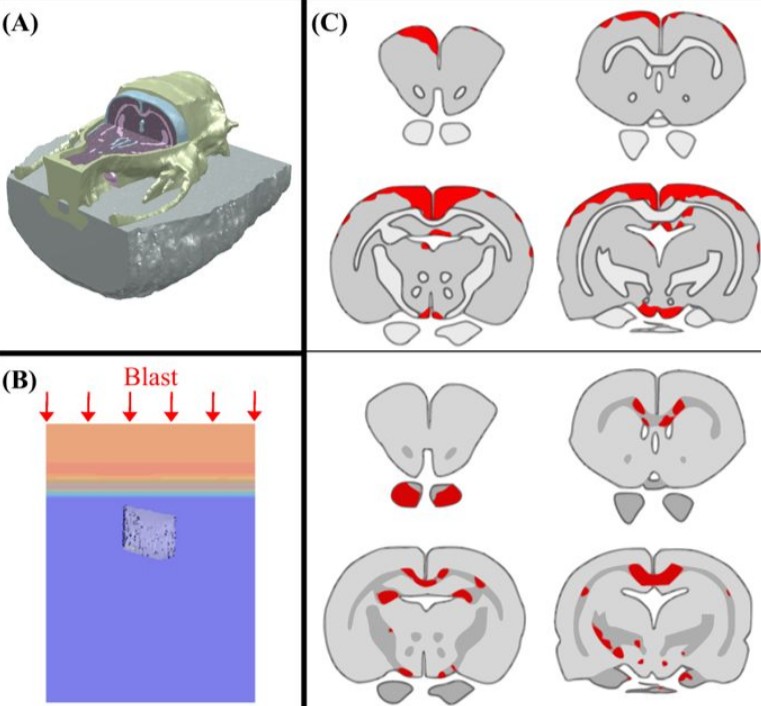
Cognition based bTBI mechanistic criteria; a tool for preventive and therapeutic innovations
Blast-induced traumatic brain injury has been associated with neurodegenerative and neuropsychiatric disorders. To date, although damage due to oxidative stress appears to be important, the specific mechanistic causes of such disorders remain elusive. Here, to determine the mechanical variables governing the tissue damage eventually cascading into cognitive deficits, we performed a study on the mechanics of rat brain under blast conditions. To this end, experiments were carried out to analyse... Read more
Daniel Garcia-Gonzalez, Nicholas S. Race, Natalie L. Voets, Damian R. Jenkins, Stamatios N. Sotiropoulos, Glen Acosta, Marcela Cruz-Haces, Jonathan Tang, Riyi Shi & Antoine Jérusalem
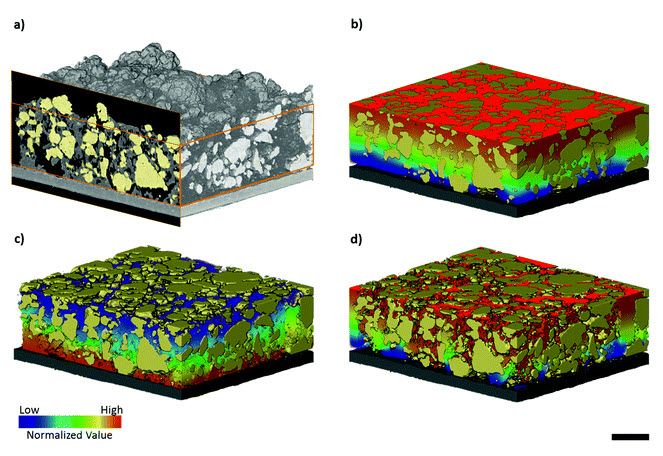
Three-dimensional image based modelling of transport parameters in lithium–sulfur batteries
An elemental sulfur electrode was imaged with X-ray micro and nano computed tomography and segmented into its constituent phases. Morphological parameters including phase fractions and pore and particle size distributions were calculated directly from labelled image data, and flux based simulations were performed to determine the effective molecular diffusivity of the pore phase and electrical conductivity of the conductive carbon and binder phase, D... Read more
Chun Tan, Matthew D. R. Kok , Sohrab R. Daemi , Daniel J. L. Brett and Paul R. Shearing
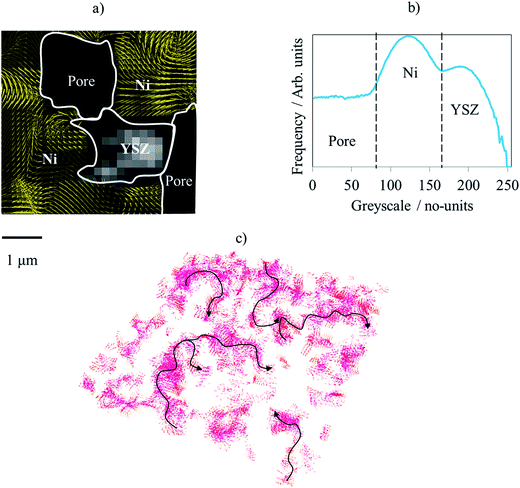
Evaluating microstructure evolution in an SOFC electrode using digital volume correlation
Degradation mechanisms within solid oxide fuel cells (SOFC) during thermal cycling limit operational start-up times and cell lifetime, and must therefore be better understood and mitigated. This work explores such mechanisms using digital volume correlation (DVC) techniques applied to lab-based X-ray tomograms where the microstructural evolution is evaluated during the operational cycling of a Ni–YSZ/YSZ cell. To emulate reduced start-up times, five tomograms were collected over four operat... Read more
T. M. M. Heenan, X. Lu,, D. P. Finegan,, J. Robinson, F. Iacoviello, J. J. Bailey, D. J. L. Brett and P. R. Shearing
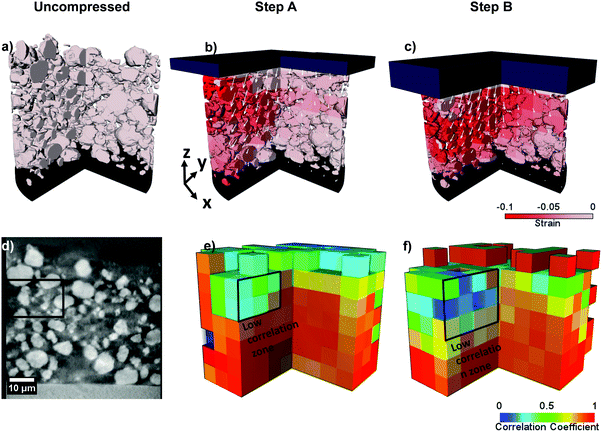
Lithium-ion (Li-ion) batteries operate via electrochemical reactions between positive and negative electrodes, formed by complex porous microstructures. An improved understanding of these materials can lead to a greater insight into the link between microscopic electrode morphology and macroscopic performance. The practice of calendering electrodes after manufacturing has been widely used to increase the volumetric energy density and improve the electrical contact between electrode... Read more
S. R. Daemi,X. Lu, D. Sykes, J. Behnsen, C. Tan, A. Palacios-Padros, J. Cookson, E. Petrucco, P. J. Withers, D. J. L. Brett and P. R. Shearing
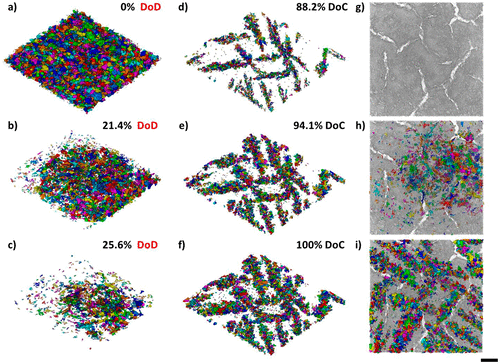
Four-Dimensional Studies of Morphology Evolution in Lithium–Sulfur Batteries
Lithium sulfur (Li–S) batteries have great potential as a successor to Li-ion batteries, but their commercialization has been complicated by a multitude of issues stemming from their complex multiphase chemistry. In situ X-ray tomography investigations enable direct observations to be made about a battery, providing unprecedented insight into the microstructural evolution of the sulfur cathode and shedding light on the reaction kinetics of the sulfur phase. Here, for the first time, the mor... Read more
Chun Tan, Thomas M. M. Heenan, Ralf F. Ziesche, Sohrab R. Daemi, Jennifer Hack, Maximilian Maier, Shashidhara Marathe, Christoph Rau, Daniel J. L. Brett, Paul R. Shearing
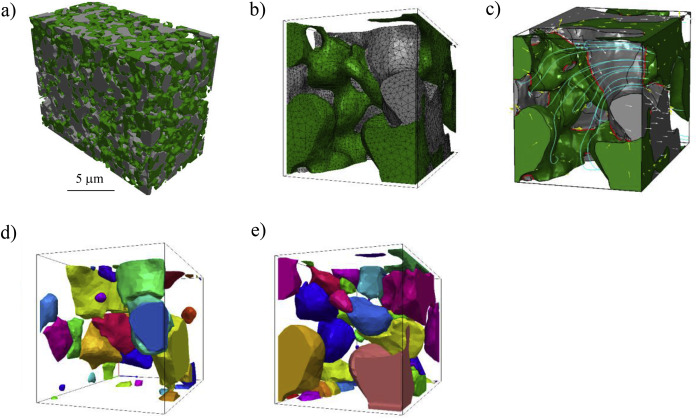
The electrode microstructural properties significantly influence the efficiency and durability of many electrochemical devices including solid oxide fuel cells. Despite the possibility of simulating the electrochemical phenomena within real three-dimensional microstructures, the potential of such 3D microstructural information has not yet been fully exploited. We introduce here a completely new methodology for the advanced characterization of inhomogeneous current distribution base... Read more
A.Bertei, V.Yufit, F.Tariq, N.P.Brandon
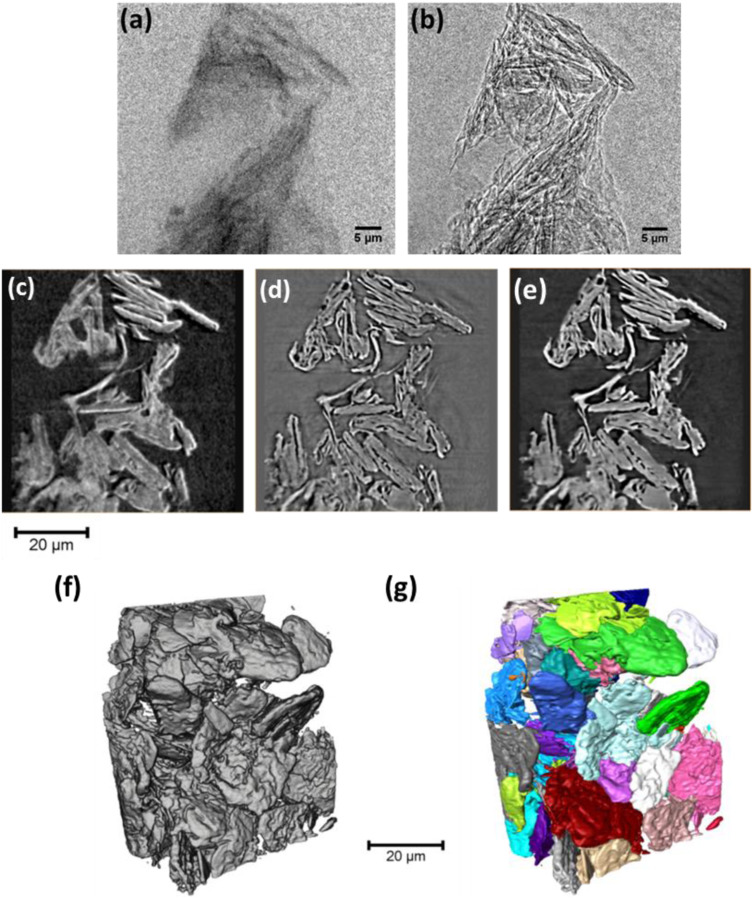
The use of contrast enhancement techniques in X-ray imaging of lithium–ion battery electrodes
Understanding the microstructural morphology of Li–ion battery electrodes is crucial to improving the electrochemical performance of current Li–ion battery systems and in developing next-generation power systems. The use of 3D X-ray imaging techniques, which are continuously evolving, provides a noninvasive platform to study the relationship between electrode microstructure and performance at various time and length scales. In addition to characterizing a weakly (X-ray) absorbing graphite... Read more
Oluwadamilola O. Taiwo , Donal P. Finegan , Jeff Gelb , Christian Holzner , Daniel J.L. Brett , Paul R. Shearing
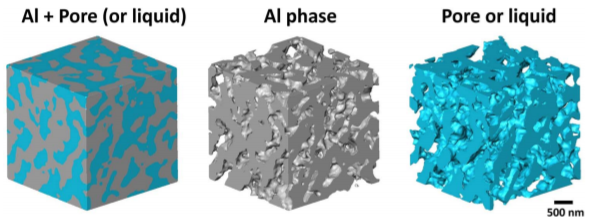
Nanoporous Aluminum by Galvanic Replacement: Dealloying and Inward-Growth Plating
In aqueous solutions, electro/chemically deposited metals usually grow outward into electrolyte. Here we report that the reduced Al grows inward into the sample, surprisingly, while Mg (in pure Mg and Al2Mg3 alloy) is galvanically replaced with Al in an ionic liquid. The galvanic replacement reaction (GRR) of Al2Mg3 involves a dealloying process that generates a nanoporous Al skeleton, and simultaneously the inward-growth plating of Al that thicke... Read more
Wei Yang, Xian-Gui Zheng, Shao-Gang Wang, Hai-Jun Jin
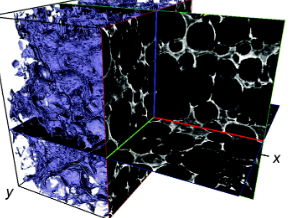
Biodegradable materials, such as collagen scaffolds, are used extensively in clinical medicine for tissue regeneration and/or as an implantable drug delivery vehicle. However, available methods to study biomaterial degradation are typically invasive, destructive, and/or non-volumetric. Therefore, the objective of this study was to investigate a new method for nondestructive, longitudinal, and volumetric measurement of collagen scaffold degradation. Gold nanoparticles (Au NPs) were covalently ... Read more
Tyler A. Finamore, Tyler E. Curtis, James V. Tedesco, Kathryn Grandfield, Ryan K. Roeder